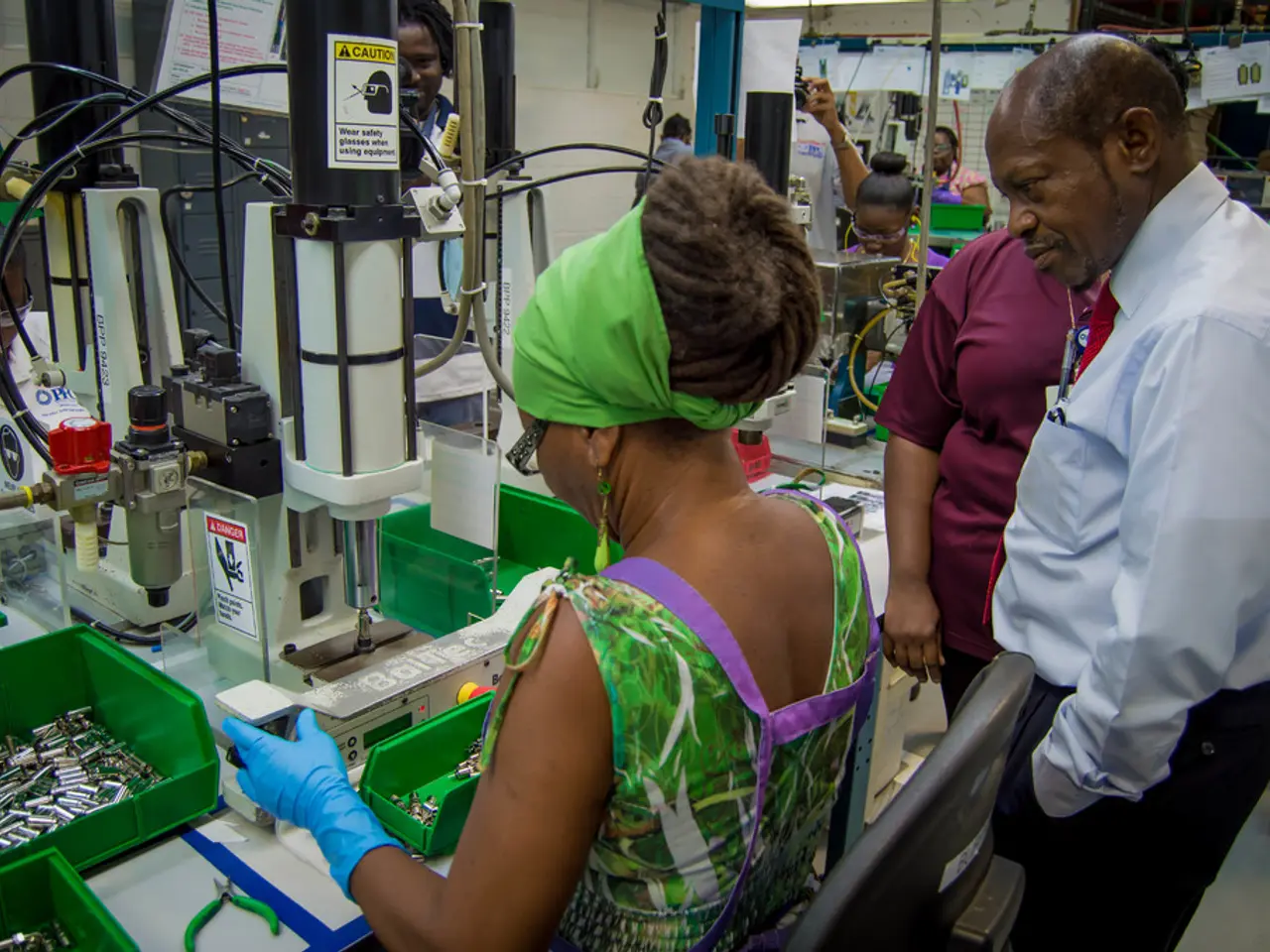Capital Market Innovations: Creating a Wave with Blue Bonds
Blue bonds, a novel approach to financing marine and ocean-based projects, have gained traction in recent years as a means to address the underfunding of the United Nation's Sustainable Development Goal (SDG) 14: Life Below Water.
The issuance of blue bonds follows a series of key steps to ensure they meet international standards and contribute effectively to ocean and water sustainability. These steps, outlined in various financing frameworks and thematic bond initiatives linked to the UN's SDGs, emphasize transparency, alignment with SDG priorities, robust management, and reporting.
Framework Development
The first step in issuing a blue bond involves establishing a clear financing framework. This framework defines eligibility criteria, the use of proceeds, and governance structures. A dedicated working group and risk management system are set up to oversee the bond issuance and application of funds [1].
Use of Proceeds Management
Responsibility for managing the proceeds and tracking allocations is assigned to a treasury or finance department. Proceeds are allocated to eligible blue projects within a defined timeline, typically two years. Unallocated proceeds are temporarily invested in secure market instruments [1].
Impact Reporting and Transparency
Issuers commit to regular, typically annual, public reporting on the allocation of proceeds and environmental or social impacts linked to the blue bond projects. This builds accountability and investor confidence [1][3].
Partnerships and Capacity Building
Collaboration with multilateral development banks (MDBs), national governments, and other stakeholders is crucial for building capacity, aligning the bond with the SDGs, and tailoring the framework to local development priorities [2][3].
Institutional Alignment and Sustainability
Integrating the issuance within national policy frameworks and sustainability strategies is essential. This often involves consultations with ministries of finance, environment agencies, and other relevant bodies to ensure the bond supports country-driven climate or marine conservation outcomes [3].
The United Nations Development Program (UNDP) and other UN entities support these processes through technical assistance and advisory roles. Notable examples of blue bond issuance include the Republic of Seychelles, which raised $15 million for marine protection and fisheries governance in 2018 [4], and France's Saur Group, which raised €550 million in October 2024 for sustainable water management initiatives [5].
Blue bonds can finance a variety of projects, such as coastal ecotourism, sustainable energy, sustainable maritime transport, sustainable marine fisheries management, sustainable aquaculture operations, seafood supply chain sustainability, clean water and wastewater management, and port infrastructure projects that prevent marine pollution [6].
The market for blue bonds has grown significantly, reaching about $7.2 billion by July 2024 [7]. However, more complex financial instruments like debt-for-nature swaps, where a developing country's external debt is forgiven or reduced in exchange for local environmental conservation measures, are less common [8].
Issuers of blue bonds can be sovereign entities, financial institutions, multilateral development banks, corporations, and municipalities. Investors include high-net-worth individuals, venture capital firms, and investment banks [9].
As the blue economy is expected to double in size to $3 trillion by 2030, creating 40 million jobs and making it the eighth largest economy in the world, with an asset value estimated at $24 trillion [10], the need for sustainable financing solutions like blue bonds becomes increasingly important.
To ensure the sustainability and effectiveness of blue bonds, issuers should develop a framework that sets a "blue baseline", outlining clear targets, regularly disclosing sustainability performance metrics, and contributing to one or more of the SDGs, particularly SDG 6 (clean water and sanitation) and SDG 14 (life below water) [11].
The proceeds from blue bond issuances are typically used for large-scale infrastructure projects, such as maritime transportation and marine renewable energy [12]. Blue bonds enable issuers to expand and diversify their investor base while gaining reputational advantages from supporting sustainable development initiatives [13].
It is essential that the framework considers the UN's Sustainable Ocean Principles and the Ocean Stewardship 2030 report, which provides a roadmap for achieving a healthy and productive ocean by 2030 [14]. The framework should also set key performance indicators (KPIs) that are measurable and auditable, with positive targets contributing to the relevant SDG [11].
Any project relating to the blue environment can be labelled as "blue". The report sets out five tipping points and two ambitions for each tipping point to accelerate solutions for sustainable and fully traceable seafood, decarbonised shipping, harnessing ocean energy, mapping the ocean, and ending waste entering the ocean [15].
In conclusion, blue bonds represent a promising avenue for financing sustainable marine and ocean-based projects. By following best practices and aligning with global standards, these bonds can play a significant role in advancing the UN's SDGs and promoting ocean and water sustainability.
The first blue bond issuance step involves developing a financing framework that outlines the eligibility criteria, use of proceeds, and governance structures, often with the support of multilateral development banks and other stakeholders [2].
The proceeds from blue bond issuances are typically invested in a variety of projects that contribute to the blue economy, such as sustainable aquaculture operations, clean water and wastewater management, and sustainable marine fisheries management, aligning with the United Nation's Sustainable Development Goals [6].




